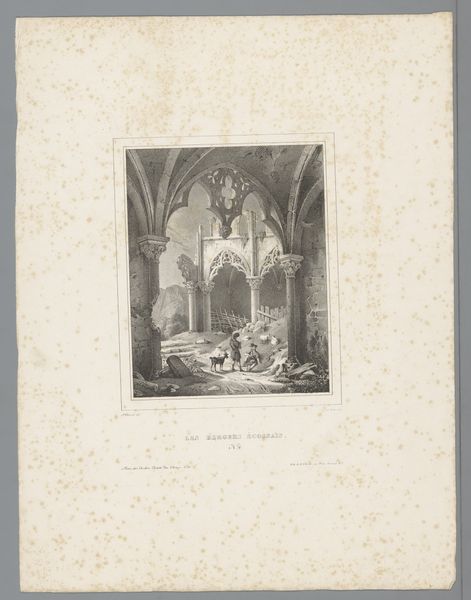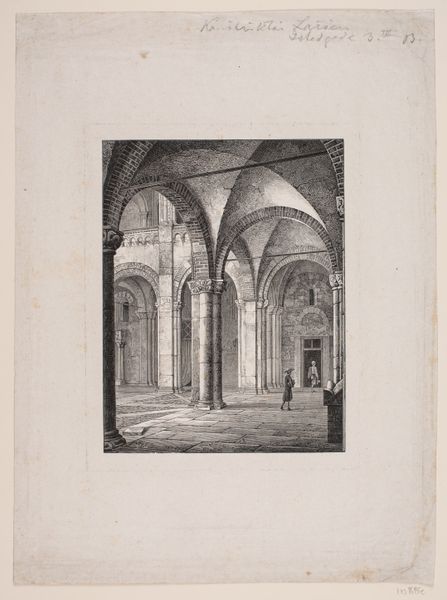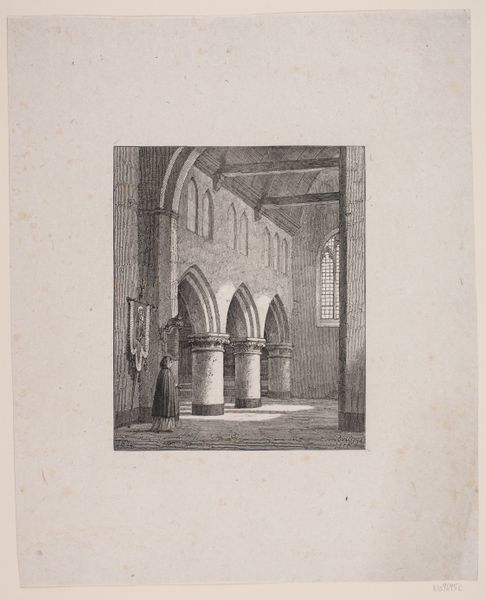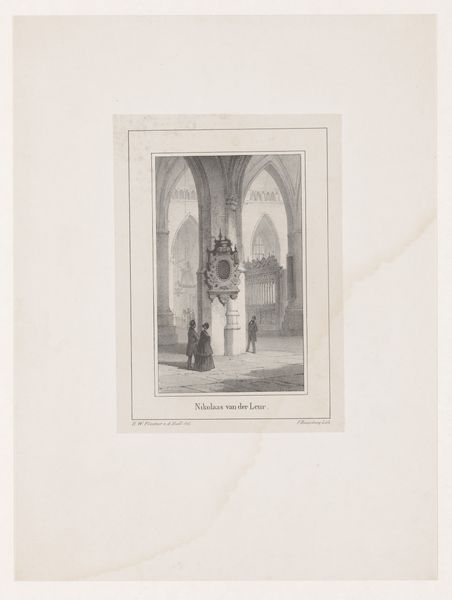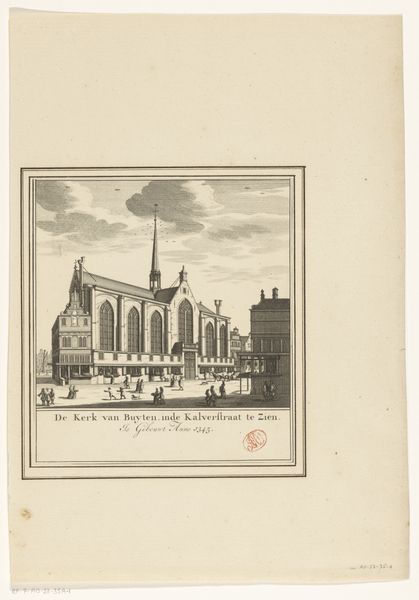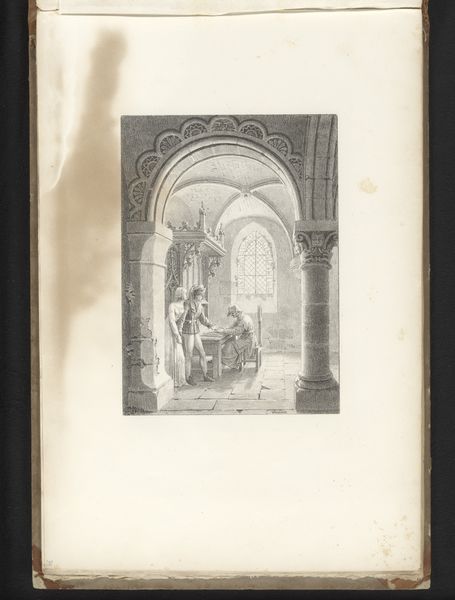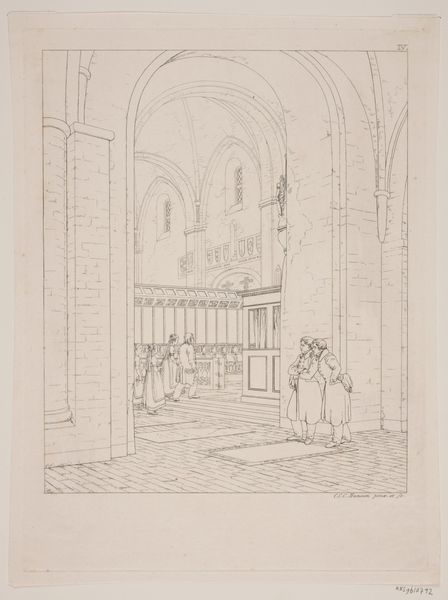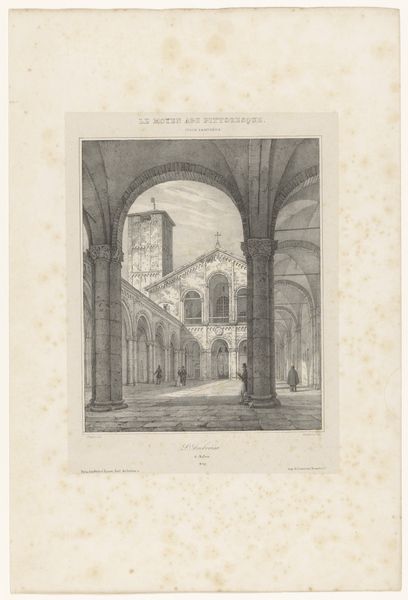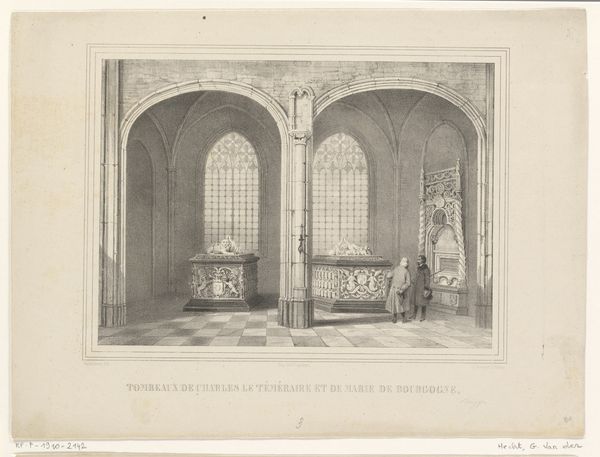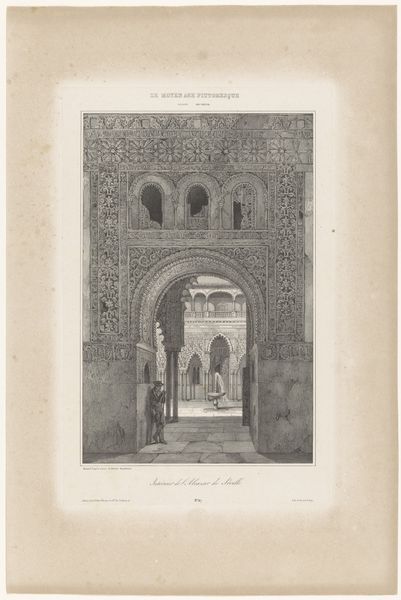
drawing, paper, ink
#
drawing
#
paper
#
ink
#
romanticism
#
cityscape
#
genre-painting
Dimensions: height 490 mm, width 303 mm
Copyright: Rijks Museum: Open Domain
Curator: This ink drawing on paper, "Kapel in de Dom van Aken," or "Chapel in Aachen Cathedral," by Paulus Lauters, was created sometime between 1816 and 1848. It's part of the Rijksmuseum collection. Editor: My first impression is the play of light and shadow, creating an almost reverential atmosphere despite the seemingly mundane subject matter. Curator: Precisely. Lauters uses the drawing medium to evoke Romantic sensibilities around sacred space, while hinting at social conventions and relations. Notice the figures, they seem aware of a larger socio-religious narrative in the Aachen chapel. What relations of gender, and class are at play? Editor: Well, thinking materially, consider the paper itself –likely a commercially produced substrate that allowed for the broader dissemination of these images. The reproducibility offered by drawings facilitated cultural exchanges within artistic communities and between classes. The very ink applied creates this Romantic architectural form. Curator: That's an excellent point. Reproduction allowed for democratization of artistic taste and broader cultural consumption. How does the rendering and display of architecture, often a tool of empire, contribute to a collective European identity? Editor: Indeed. The means of representation here – the drawing implements, the mass-produced paper –speak to a rising merchant class, of new patterns of social life that relied on both technology and art for legitimization. Curator: Looking at this drawing within Romanticism is helpful to situate architecture, people, gender roles, social conventions of church going, into art and culture. By representing figures that signal status and wealth, doesn’t the Aachen Chapel begin to suggest a historical consciousness linked to its architectural setting? Editor: Perhaps, it calls us to contemplate how cultural consumption shapes how we assign or relate with status—especially by controlling access. I think of who consumes it now. It being in the Rijksmuseum gives access. Curator: Viewing this drawing reminds us that social space is inherently intertwined with power, that architecture, as art, serves to represent and reinforce certain socio-historical constructions. Editor: And I'm struck again by the humble ink and paper employed in this rather elaborate rendering. To think about those things, like we would consider grand marble sculptures helps disrupt art historical convention and hierarchies.
Comments
No comments
Be the first to comment and join the conversation on the ultimate creative platform.
